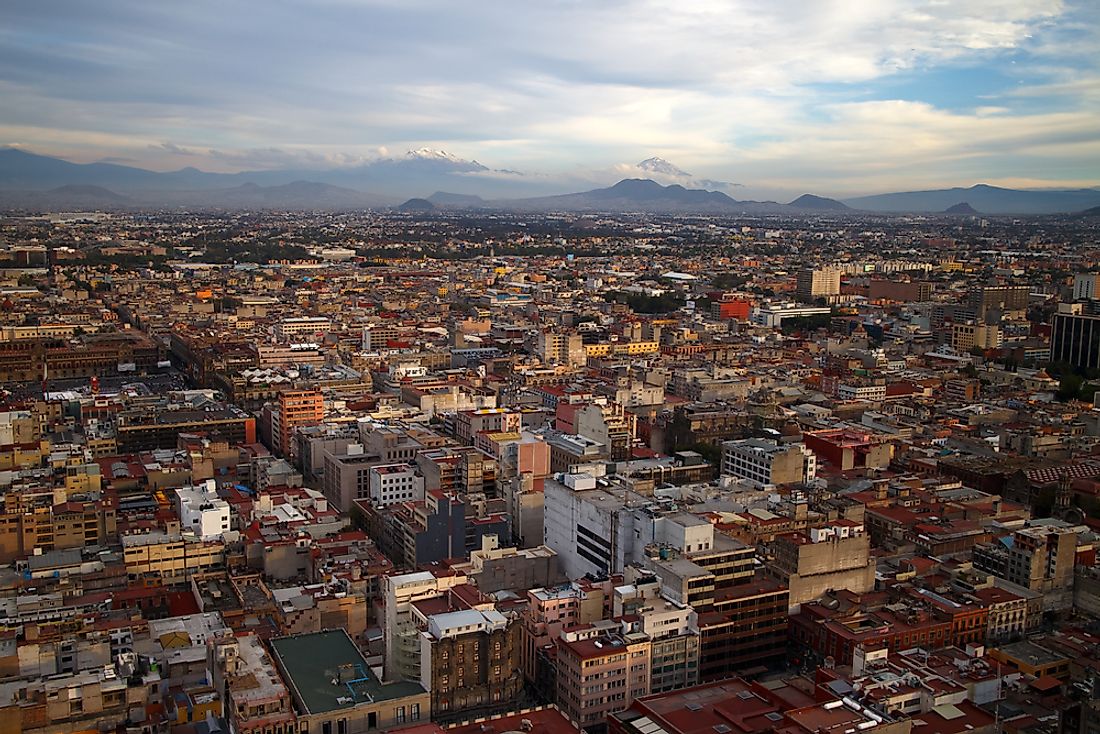Where Is The Valley of Mexico?

The Valley of Mexico is the highlands plateau situated in the are now occupied by Mexico City, and is surrounded by volcanoes and mountains. The most important early civilization in the valley was that of Aztecs, and today the valley is a home to one of the world’s largest metropolitan populations. It has the most important city belts in the nation of Mexico, such as that of the Mexico City Metropolitan Area, Hidalgo, Tlaxcala, and Puebla. The drainage of the valley is largely taken care of by the Tula River and then the Panuco River, and, after that, these waters drain into the Gulf of Mexico. The Valley of Mexico sits at around 2,200 meters above mean sea level.
4. History
The history of the Valley of Mexico saw the rise of Aztec settlements, and the economic basis of these people was agriculture in the valley. The Pre-Columbian civilizations herecan be dated to as far back as the Cuicuilco-Ticoman, a culture which was present in the valley as it succeeded the Middle Formative villages present here, and retained the traits of manufacturing solid handmade figures. Even the Cuicuilco area was covered with the nearby lava, which erupts in the valley and covers and forms the round pyramid-like structures seen here. The oldest known human civilization in the area existed in Tlapacoya, which is located on the Lake Chalco. It was seen that, after the end of Pre-Columbian era, Teotihuacan and the Toltecs came under the rule of Aztecs in the 13th Century, which were in turn conquered by the Spanish Empire, and they named the area as Mexico.
3. Economy and Culture
The contemporary Valley of Mexico has taken on a modern, urban cultural form, and its economy is on the rise. The metropolitan area of the Mexico Valley has a population of around 20 million people. It is basically divided into the dense urban areas and the surrounding suburbs where increasing numbers of people are residing. In order to be precise, it should be noted that the current growth in population and the ongoing economic rise in the area are mainly being witnessed in the outer suburbs of the states of Mexico and Hidalgo. The region has a rich cultural heritage, as the first Art Academy was also established in the city, and the famous 19th Century Mexican painter Jose Maria Velasco had created numerous masterpieces in and around this area.
2. Natural Habitats and Biodiversity
The habitat and Biodiversity of the Valley of Mexico is unique, as it is mostly covered with grasses and shrubland areas, which constitute the primary forms of its vegetation. One can find that in this eco-region there are many pine-oak woodlands as well, which makes it a famous vegetation belt to Mexicans and people fro, around the globe alike. Various endangered bird and animal species are also found in the valley, out of which many birds use the area as an important part of their migratory routes. Some of the vertebrate species that are found in the valley are Eastern cottontail rabbits, Striped skunks, Common opossums, Sierra Madre Sparrows, and Chihuahuan Desert horned lizards.
1. Environmental Threats and Territorial Disputes
Many ongoing and serious threats are seen degrading the environment of the Valley of Mexico. These include the municipal sewage and industrial waste which are polluting the rivers due to substandard wastage disposal facilities. Meanwhile, deterioration of agricultural lands, a lack of clean water among the massive human population in the area, and deforestation are also raising concern for the area's cities and the surrounding environmental systems. When placed in this context, many disputes regarding marine dumping, the laws of sea, and ship pollution have also come into the limelight within the border areas, as even coastal pollution in Mexico is affecting humans and wildlife as far inland as the valley of Mexico.







